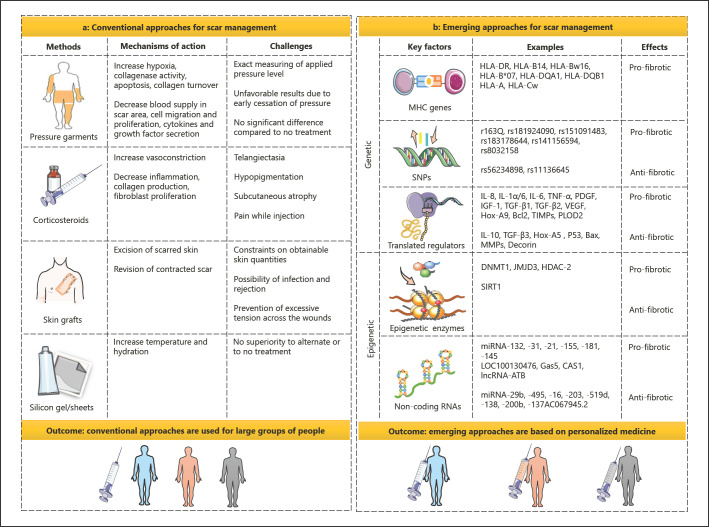Fig. 4.
Conventional and emerging therapeutic approaches for scar management. a The conventional approaches for scar management include pressure garments, corticosteroids, skin grafts, and silicone gels and sheets affecting wound healing and scar formation through different mechanisms of action. However, they are not targeted and efficient enough due to associated challenges. Conventional strategies are also used for large groups of people. Therefore, (b) new methods based on the optimization of wound healing procedure in terms of genetic and epigenetic regulations are emerging to diminish or prevent dermal fibrosis. MHCs and SNPs, genes coding for key regulators such as cytokines and growth factors, DNA methylation signatures, histone modification patterns and related enzymes, and noncoding RNAs interact and cooperate as a complex network affecting cell proliferation, differentiation, and ECM synthesis. Deregulation of the genetic and epigenetic network leads to aberrant behavior of different cells driving excessive fibroblast proliferation and differentiation, and consequently cutaneous fibrosis. Thus, these regulators can be identified via genetic and epigenetic screening and targeted using precision medicine strategies for scar management.

